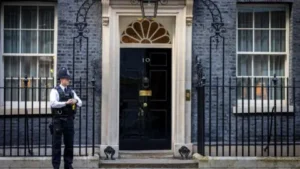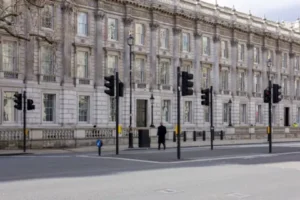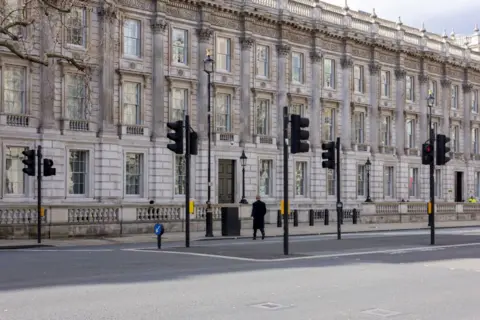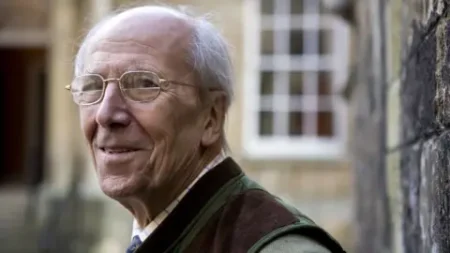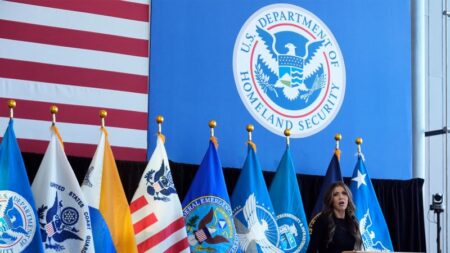The article titled *What happens inside the government’s crisis room* provides an in-depth look at the dynamics that take place within the government’s crisis management environment, specifically focusing on the Cabinet Office Briefing Rooms (COBR). It highlights the operations that unfold during times of national emergency and the infrastructure that supports decision-making processes at the highest levels of government.
The piece begins by acknowledging that despite years of reporting on COBR meetings from the outside, the authors, Chris Mason and Adam Fleming, have never been granted access to the actual rooms—until now. This rare opportunity allowed them to witness firsthand how a crisis room operates, with the BBC’s Newscast podcast providing an exclusive glimpse inside. Upon entering the building, they surrendered their mobile phones and other electronic devices before proceeding through narrow corridors that even included parts of the historic building that previously served Henry VIII.
Upon stepping into the main, windowless room behind a sturdy metal door, they express their initial apprehensions about being underwhelmed, given the aura and significance they had associated with these settings. However, their expectations were exceeded. The room gives off an impression of solemnity and intensity, which reflects the significance of the decisions that are made within. Central to the room is a long rectangular table surrounded by chairs, exhibiting a clear hierarchy during meetings, with the chairperson—often the Prime Minister—taking a distinctly central position.
The backdrop of this room is dominated by large screens that display information pertinent to ongoing crises, as well as clocks indicating time zones in major cities like Washington D.C. and New Delhi—an important aspect during international incidents. One specific instance mentioned was a recent meeting related to a plane crash involving an Air India jet, showcasing the operational nature of the room.
The article elaborates on the purpose and infrastructure of the National Situation Centre, or SitCen, which operates nearby. Roger Hargreaves, the civil servant overseeing this center, is portrayed as taking immense pride in the effort put forth to improve crisis preparedness, especially in light of the lessons learned during the COVID-19 pandemic. The pandemic had starkly highlighted the deficiencies within existing contingency plans and the need for better coordination during unforeseen emergencies. In its wake, Whitehall appears eager to showcase advancements they have made since these experiences, aiming to bolster public confidence as well as governmental accountability.
A significant moment in the article involves an acknowledgment from senior minister Pat McFadden, who candidly expresses the inherent risk of merely preparing for past crises rather than anticipating future ones. He points to the necessity of evolving from the lessons learned during previous emergencies. During their visit, McFadden mentions the launch of a national test for the government’s emergency alert system—an initiative aimed at ensuring that government and public communication is streamlined during crises. This test is set for September 7, a practical step towards fostering a more resilient national emergency response.
In addition to the efficiency of preparedness, data is recognized as a central pillar within the operations of the National Situation Centre. The article indicates that the abundance of data from modern, digital sources enables officials to develop improved situational awareness during crises. This includes maintaining vulnerability maps that help identify the segments of the population that may require urgent assistance during emergencies.
Ultimately, the article presents an image of government functionality that transcends typical political rhetoric, illustrating a team focused on facilitating public safety even in dire circumstances. The invitation extended to the authors reflects a growing confidence within the government infrastructure following the challenges they endured during the pandemic. Yet, a salient question remains: as emergencies continue to emerge, will the government remain adequately prepared for the unpredictability that lies ahead? This poignant inquiry encapsulates the ongoing nature of crisis management and preparedness in governance.


